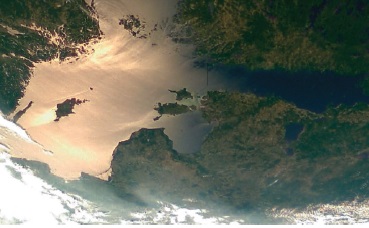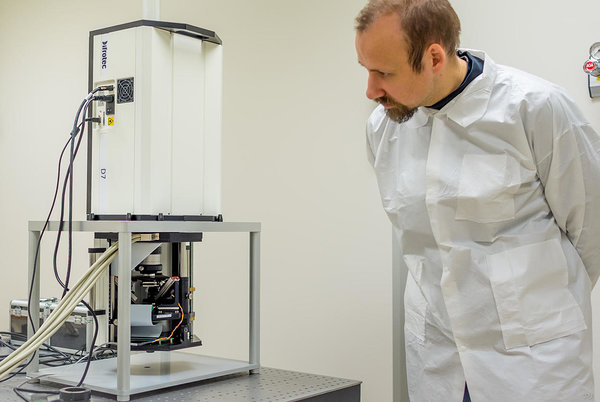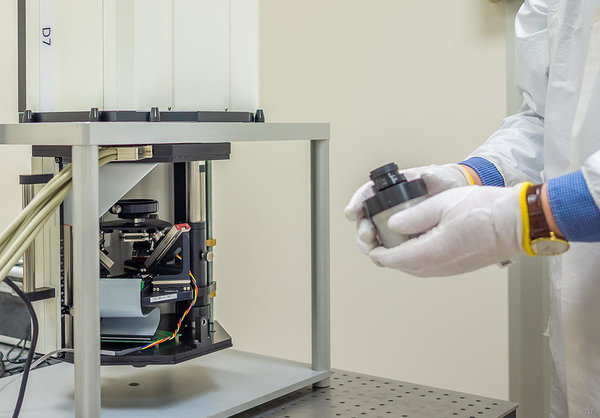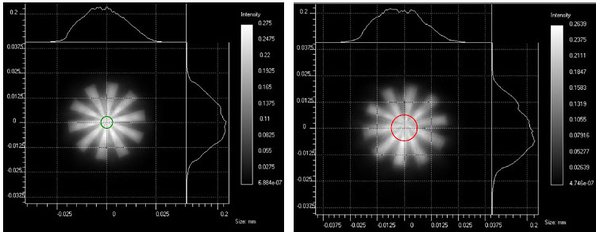The fragment of a composite image showing Estonia, Latvia, Sweden, Finland, and Russia taken by Estonian fist satellite ESTCube-1. [3]
“The measurements done by Difrotec allowed us to fully characterize the ESEO telescopic camera optics and narrow down the issues we were experiencing with the latest revisions of the camera. For flight model assembly, Difrotec helped us to verify the quality of the flight lens before and after structural modifications.” (Henri Kuuste, Engineer, Department of Space Technology, Tartu Observatory) |
ESEO is a microsatellite for monitoring the radiation environment and taking images of Earth from Low Earth Orbit (520 km). An experimental telescopic camera, fitted onto it, has Zeiss C Sonnar T* 1.5/50 lens with a resolution of about 25 m per pixel from the orbit. [2] For the camera, Department of Space Technology in Tartu Observatory had two supposedly identical high quality lenses manufactured by Carl Zeiss AG: Lens1 and Lens2.
During the assembly of the telescopic camera with Lens2, it appeared that the image resolution had fallen significantly. Tartu Observatory contacted Difrotec to compare the two Carl Zeiss lenses and characterize their image quality. In general, photo lenses have wave aberration P_V up to 5 wavelengths.
Large aberrations lead to increased wavefront gradients and consequently high density of fringes. Acquiring and processing such fringe patterns is as challenging as measuring aspheres. Here, Difrotec’s D7 with DifroMetric software proved itself uniquely useful.
Based on Zernike coefficients, a tool that models optical system, we can say that both lenses have approximately equal spherical aberration and that Lens1 is relatively more symmetrical than Lens2. For a complete analysis of the lenses' image quality, it is necessary to simulate images of test targets.
Simulated Siemens star target images help define the lenses’ resolution. It is evaluated on the basis of acceptable minimum contrast 5% and chosen critical dimension (CD = 20 m).
| Lens1 | Lens2 |
From this, we conclude that Lens1 resolves 20 meters per pixel, whereas Lens2 60 meters per pixel from the working distance of 520 km. Namely, the supposedly identical replacement lens, Lens2, renders three times fewer details than the Lens1 and therefore does not match the required critical dimension.
The unprecedented angstrom level accuracy of the D7 makes its capable of distinguishing the quality difference between lenses, where the aberrations far exceed (> 2400 times) the D7's accuracy. The interferometer D7 with the software DifroMetric offers a dynamic range wide enough to detect deviations of wavefronts in sub-nanometer and micrometer scale simultaneously.
Tartu Observatory turned to Difrotec to compare the flight lens from Carl Zeiss (Lens3) before and after the camera assembly procedures in order to check if the quality is suitable for their space camera. In this case, the results showed that the quality of the flight lens before and after the assembly procedures remained nearly the same.
We thank Tartu Observatory for their collaboration and especially Henry Kuuste for helping to complete this text.
References:
2. Sünter et al. Design and Testing of a Dual-Camera Payload for ESEO. 67th International Astronautical Congress, Guadalajara, Mexico, 2016.
3. Slavinskis et al. ESTCube-1 in Orbit:
Experience and Lessons Learned. Aerospace and Electronic Systems Magazine, Vol.
30, No. 8, 2015, pp. 11-22.
The full technical report you can here
The full text is here



